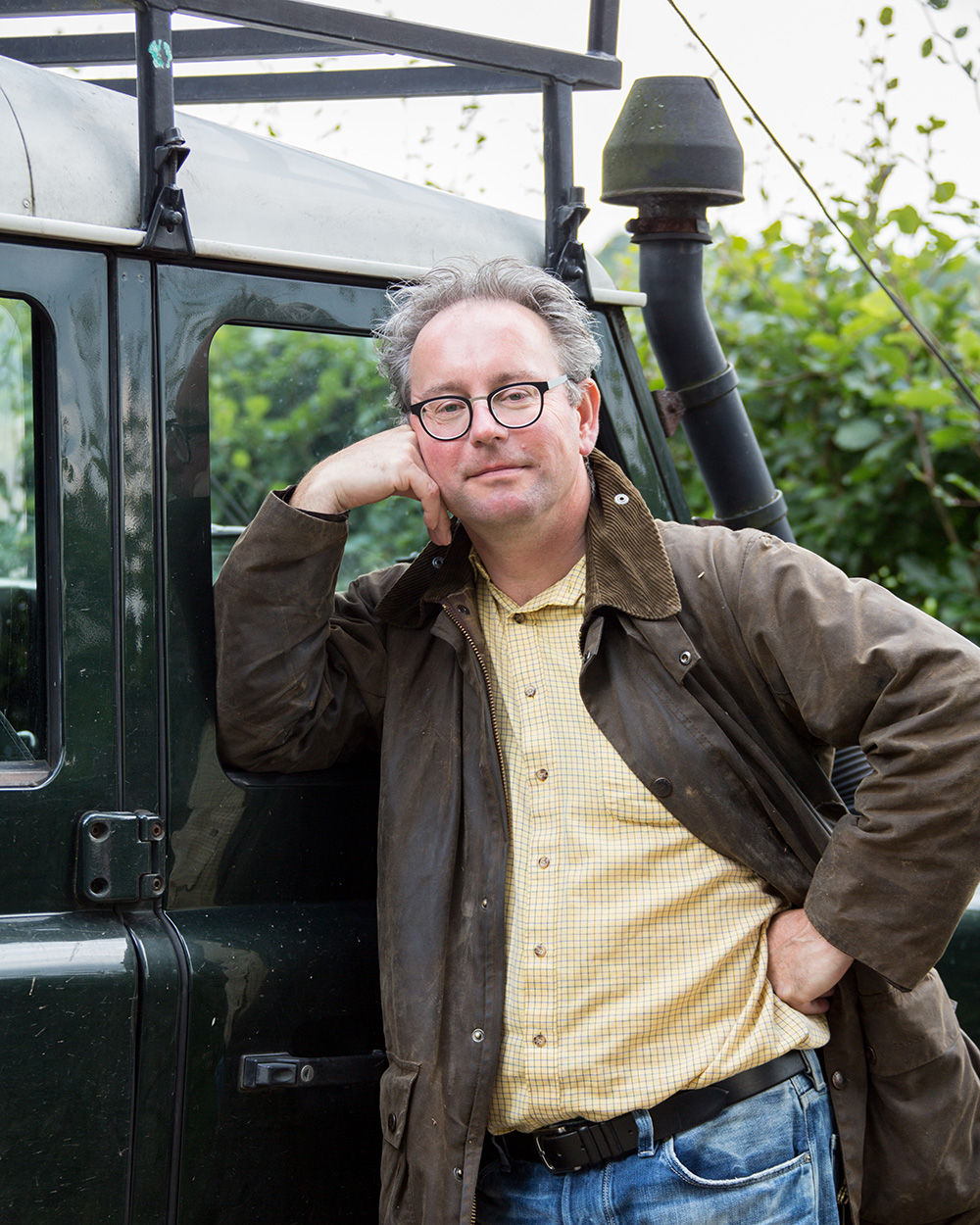Substantial strides
By: Mario Broekhuis
The approach of the Grand Duc -we will keep that name for convenience- is progressing with considerable strides. The carriage of Castle de Haar is gradually becoming more presentable. The crackled patent leather has been cleaned, bald spots on the interior lining have been filled in and the chassis has partly received a new coat of paint. But the elegant vehicle still lies apart.


Already at an earlier stage, restorer Maria Stolk had consolidated the case's flaking paint, simply fixing it to prevent further flaking. That consolidation is done by injecting a glue substance and by heating the old paint, causing it to flow back into place smoothly and smoothly. From the color differences in the paint in the process, she discovered previous restorations, which apparently could not prevent the deterioration. For the undercarriage, that deterioration meant that all parts had to be taken apart and it was necessary to partly sand, putty and repaint them, in a matte paint so as not to stand out among the parts in the old paint. Meanwhile, Piet Stolk and an intern apprenticed to Stolk as a restorer put those parts back together. And in the process, everything is perfectly aligned again, because in the years in the depot, the rear springs had tilted inward, the carriage "dipped" forward and the so-called equator was bent. Just like a car whose wheels are out of balance and not aligned, the carriage simply could no longer run smoothly.
Another job was to use a soft brush and a friendly detergent to wash the dust and dirt of over a century off the leather fenders and front shield. That leather was once shiny from the paint, but that same paint has dried out over time and begun to crack. Craquelé is what we call it. It is charming to see. But at the same time, edges of the leather have broken off and some of the stitching has deteriorated. The Stolks repaired it with the proverbial velvet gloves.
In addition, Piet Stolk has made wooden frames for the missing cushions on buck and servant's bench, Jean-Louis Stolk is working on the candle lamps and Maria Stolk has tapped into the supply of cotton swabs to remove the old varnish. These are all precision jobs that four craftsmen are now working on daily.
The four carriages in this project come from the management of Borg and Nationaal Rijtuigmuseum Nienoord and are on long-term loan from Kasteel De Haar. This project has been made possible by VZW Pater David, Prins Bernhard Cultuurfonds, Stichting Bredius,VSB Fonds, Stichting Bonhomme Tielens, Mondriaan Fonds and Stichting kasteel de Haar. The Hippomobile Heritage Foundation supervises the implementation and takes care of the communication.
 Mario Broekhuis (51), a stewardship graduate, feels completely at home at a historic country estate like De Haar. Moreover, he knows alles of carriagesand can tell wonderful stories about it. That's why on this page Mario gives us a monthly update on the progress of the restoration of four carriages for De Haar. The four carriages in this project come from the management of Borg and Nationaal Rijtuigmuseum Nienoord and are transferred to long-term loan by Kasteel de Haar. This project has been made possible by VZW Pater Davids, Prins Bernhard Cultuurfonds, VSBfonds, Stichting Bonhomme Tielens and Stichting Kasteel de Haar. The Hippomobile Heritage Foundation is supervising the implementation and providing communication.
Mario Broekhuis (51), a stewardship graduate, feels completely at home at a historic country estate like De Haar. Moreover, he knows alles of carriagesand can tell wonderful stories about it. That's why on this page Mario gives us a monthly update on the progress of the restoration of four carriages for De Haar. The four carriages in this project come from the management of Borg and Nationaal Rijtuigmuseum Nienoord and are transferred to long-term loan by Kasteel de Haar. This project has been made possible by VZW Pater Davids, Prins Bernhard Cultuurfonds, VSBfonds, Stichting Bonhomme Tielens and Stichting Kasteel de Haar. The Hippomobile Heritage Foundation is supervising the implementation and providing communication.
